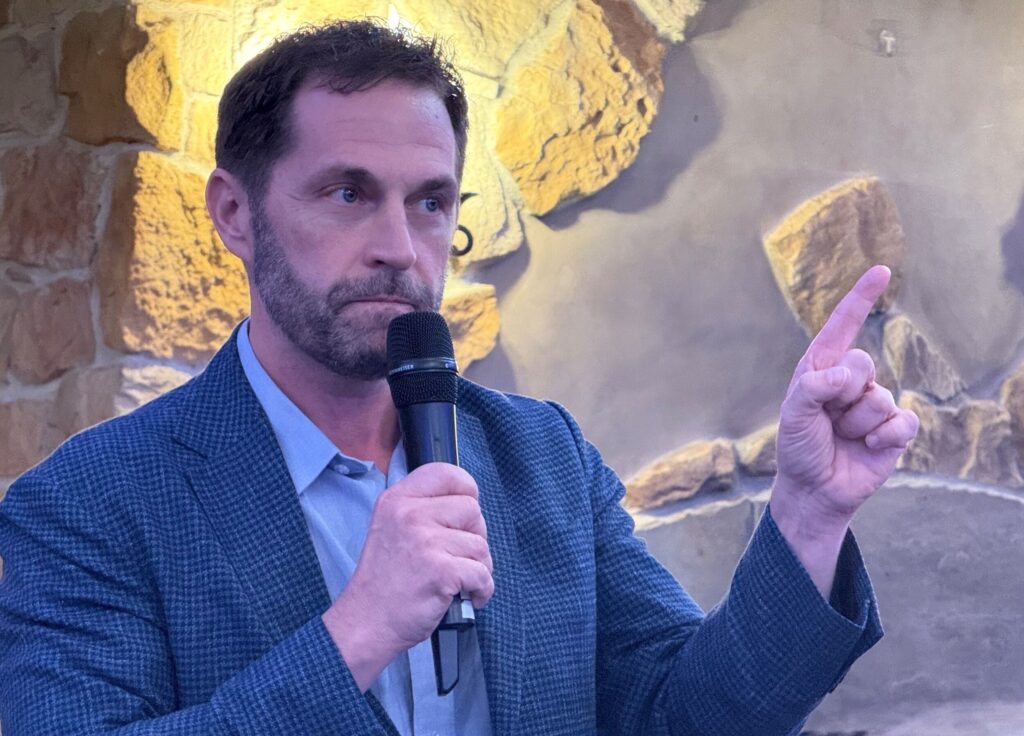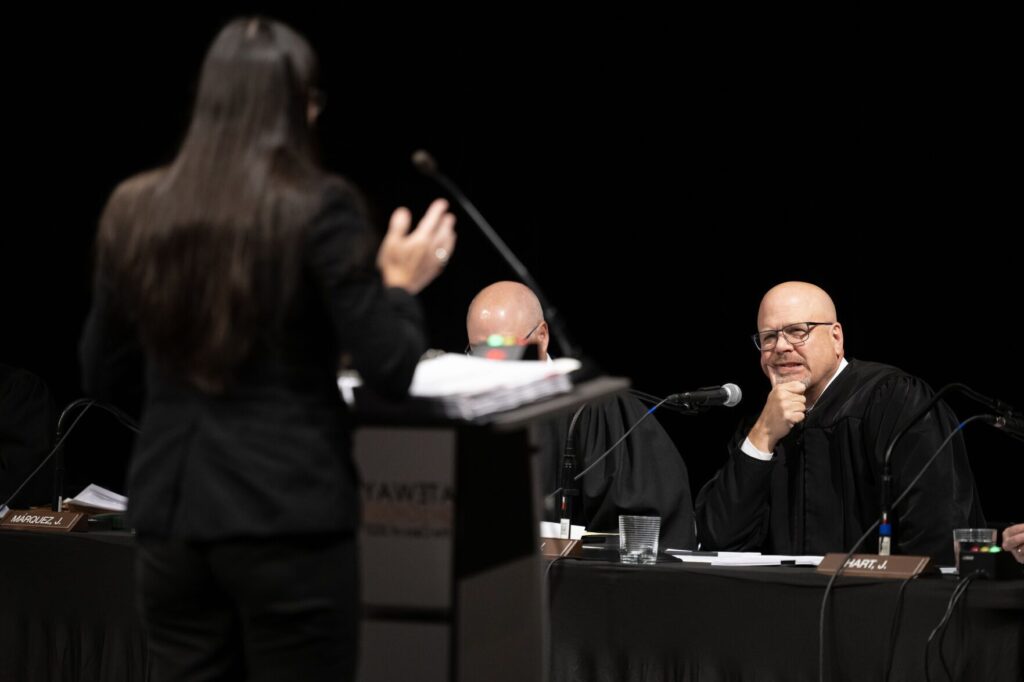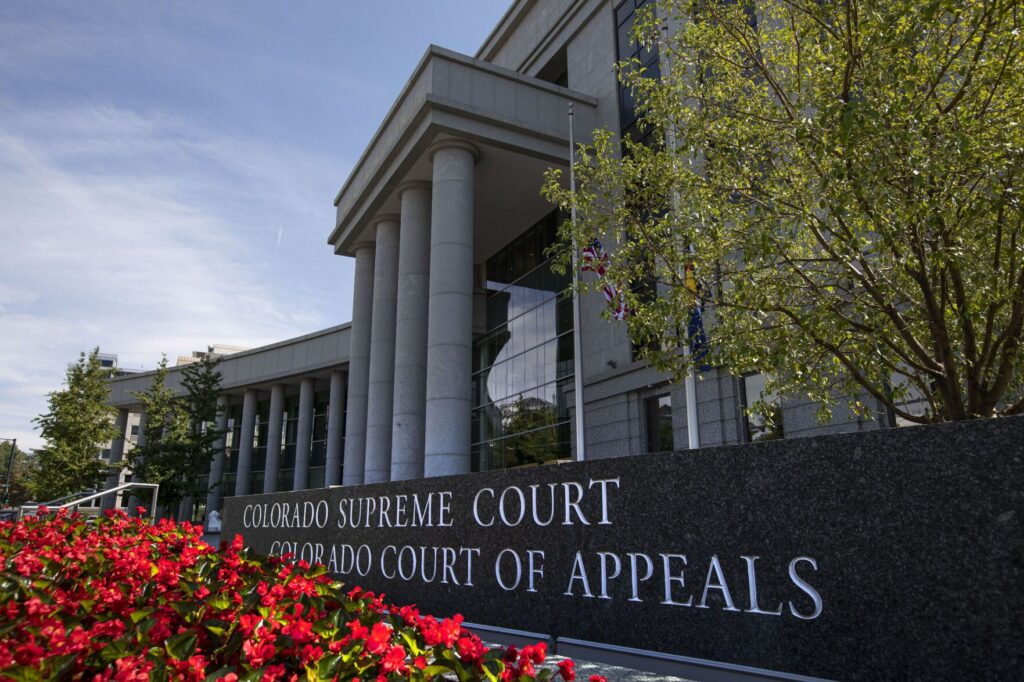Federal government’s ‘underwhelming’ plan for the Colorado River falls short of goal

For 62 days, the seven states of the Colorado River faced a mandate to come up with a plan to conserve 2 to 4 million acre-feet of water by 2023.
Failing to do so, Commissioner Camille Touton of the U.S. Bureau of Reclamation warned, would mean the federal government exercising its authority to come up with a plan on its own to “protect the system.”
But the plan unveiled Tuesday by Touton and other officials with the U.S. Department of Interior fell millions of acre-feet short of that goal.
Instead, the agency relied on existing agreements on water cuts that have been in place since 2007 that will produce about 711,000 acre-feet in reductions, with Arizona taking the bulk of that hit, followed by Nevada and Mexico.
California, the largest of all seven states and which is allocated 4.4 million acre-feet of water per year, was spared any reduction, also based on those existing agreements.
One water expert called Tuesday’s plan “underwhelming.”
The announcement that started the 60-day clock came from Touton during a U.S. Senate Natural Resources Committee hearing on June 14.
She told the committee the seven basin states must come up with a plan on how to conserve 2 to 4 million acre-feet — at the high end, more water than is used by all four upper basin states in a year — in order to preserve hydroelectric power at Hoover and Glen Canyon dams and to preserve the Colorado River system.
Negotiations among the seven states, including reportedly in Denver last week, failed to produce a plan.
The Bureau of Reclamation, which Touton leads, has tried to keep water levels at Lake Power and Lake Mead up by sending water downstream from Blue Mesa and Navajo reservoirs in Colorado and Flaming Gorge in Utah.
But it hasn’t been even close to enough. Both Powell and Mead are just a quarter full, the lowest levels since they were both first filled, Powell in 1963 and Mead in 1935.
Almost 93% of the western US is experiencing drought or abnormally dry conditions, according to Deputy Secretary Tommy Beaudreau of the interior department. Extreme drought conditions disrupt entire ecosystems, he added.
Beaudreau touted “historic investments” in the last several months, including through the bipartisan infrastructure bill, which adds some $8.3 billion to Bureau of Reclamation’s water infrastructure programs. The Inflation Reduction Act, which President Biden is signing today, includes $4 billion for conservation efforts in the Colorado River basin and other areas experiencing drought, Beaudreau noted.
In announcing the agency’s strategy, Touton said conditions and risk have not changed in the 63 days since her declarations at the Senate hearing several weeks ago. With the basin facing its 23rd year of historic drought and with Lake Powell and Lake Mead at historic lows, “the system is approaching a tipping point and without action, we cannot protect” it, she said.
Based on projections and a 24-month study of the river, Lake Mead will reach its first second tier shortage condition, known as 2A, in 2023, she said. Under existing agreements, Arizona will lose another 80,000 acre-feet, to a total of 592,000 acre-feet, or about 21% of its annual allocation, and Nevada 25,000 acre-feet of water, about 8% of its annual allocation. Mexico will see its annual allocation of 1.5 million acre-feet reduced by 7% or about 104,000 acre-feet.
The total would come out to 721,000 acre-feet – a mere 20% of what Touton said what the states needed to plan for when she met with U.S. senators on June 14.
In fact, all of those reductions are already outlined in a 2007 agreement, known as the interim guidelines, as well as a 2019 agreement, known as the Drought Contingency Plan.
As for the upper basin states — Utah, Colorado, Wyoming and New Mexico — they came up with a 5-point plan but which offered no hard numbers on how much the states would conserve. In fact, the letter sent to the Bureau of Reclamation last month claimed the upper basin states face “limited” opportunity for any further conservation efforts on the Colorado.
Touton said the agency is ready to work with the Upper Colorado River Commission on its five-point plan, and federal officials would also work with California on a sustainable path forward for the Salton Sea.
“We have the resources to bring to these partnerships,” Touton said, pointing to recent legislation.
Tanya Trujillo, assistant secretary for water and science at Interior, added the Bureau of Reclamation will look at physical modifications to Hoover and Glen Canyon dams to see if there is a way to allow water to be released below either critically low levels at Glen Canyon or “deadpool” levels at Hoover.
The bureau also announced it would reduce releases from Glen Canyon dam at Lake Powell to Lake Mead, which feeds the lower basin states, by 480,000 acre-feet, which would take that annual allocation down from 7.48 million acre-feet to 7 million. That will improve Lake Powell’s elevation by about 15 feet, according to Dan Bunk, the Boulder Canyon chief of operations.
Hickenlooper-Barrasso bill aims to reauthorize Colorado River water conservation plan
But there is nothing new in Tuesday’s announcement.
Kyle Roerink, executive director of the Great Basin Water Network, called the federal plan “underwhelming.”
“What we’re heard today about actual, quantifiable, verifiable cuts are the result of already-agreed upon deals in 2007 and 2019,” Roerink said, adding the cuts are nothing new.
The question was whether the bureau would call for what’s known as 2B cuts, which would require California to adopt voluntary reductions. That would kick in if Lake Mead drops another 3 feet below projected levels for January 1, 2023.
“For many of us who watch the Colorado River, today’s news was underwhelming but expected,” he said.
Where everyone was disappointed was the fact that no grand bargain materialized among the upper and lower basin states addressing the federal government’s demand, he said.
The lack of a grand bargain means the notion of collaboration among the seven states is a false one, Roerink said.
“They’re not singing kumbaya, they’re sharpening their knives,” he said.
The Water for Colorado Coalition was also less than impressed. In a statement Tuesday, the coalition said the 24-month study did not “incorporate actions in response to the commissioner’s prior call for the Colorado River Basin states to identify a plan to conserve an additional 2 to 4 million acre-feet annually of water to protect critical reservoir levels.”
The group noted the upper basin states’ 5-Point Plan, but added that more is needed.
“Contributions from every water use sector across the Basin are urgently needed to increase the pace of water conservation at the scale required to protect the Basin,” the group said.
“I think everyone knew this was coming,” said Eric Kuhn, former manager of the Colorado River District and a former commissioner on the Upper Colorado River Commission (UCRC).
How much the states will have to cut, mostly in the lower basin, will depend on the snowpack above Lake Powell and from Colorado, Kuhn told Colorado Politics.
A timeframe of 60 days was not enough to come up with a plan, he noted, adding that 2 million acre-feet is possible.
“I’m not sure 4 million” is politically attainable, he said.
Kuhn also pointed to a letter Monday from John Entsminger, the general manager of the Southern Nevada Water Authority, who said the last 62 days had produced “exactly nothing in terms of meaningful collective action to help forestall the looming crisis.”
“The unreasonable expectations of water users, including the prices and drought profiteering proposals, only further divide common goals and interests,” he wrote. “Through our collective inaction, the federal government, the basin states and every water user on the Colorado River is complicit in allowing the situation to reach this point.”
The solution, if not from leadership by the federal government or even the states, may have to come from agriculture, because that’s where the water is, according to James Eklund, a water attorney, former head of the Colorado Water Conservation Board and a former commissioner for Colorado on the UCRC.
Eklund told Colorado Politics today’s announcement signaled two things: the states failed to negotiate a plan, and that’s a lack of leadership, and two, the federal government doesn’t know what to do.
He said the federal government is “handcuffed by their tradition of deferring to the states, but they have to follow through when state leadership fails.”
Eklund said that Colorado has held a leadership role on the river for a long time, due in part to its agricultural economy, and as a result the solutions will have to come from the ag users in both the upper and lower basin states.
“We can’t just put our heads in the sand or point our fingers at someone else,” he said. “If, as a state we’re saying it isn’t our problem, we’re putting ourselves at a competitive disadvantage for the dollars from the federal level devoted to this crisis.”
Eklund pointed out that Colorado’s senators have stepped up, putting $4 billion for the Colorado River and drought action into the Inflation Reduction Act, along with Arizona Sen. Krysten Sinema.











